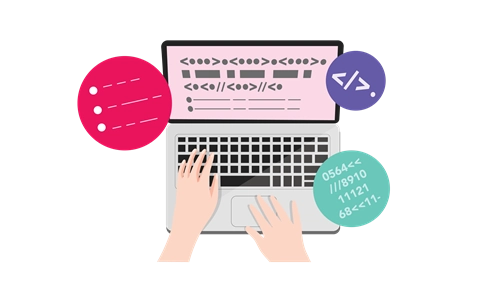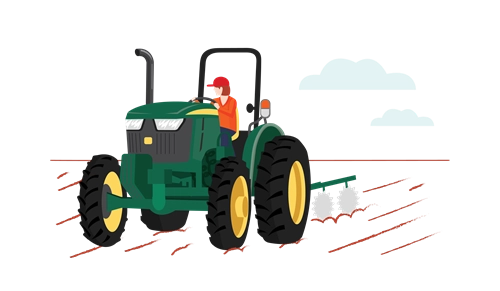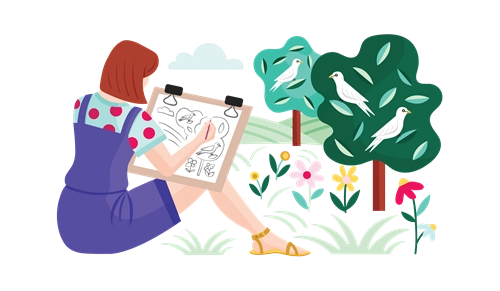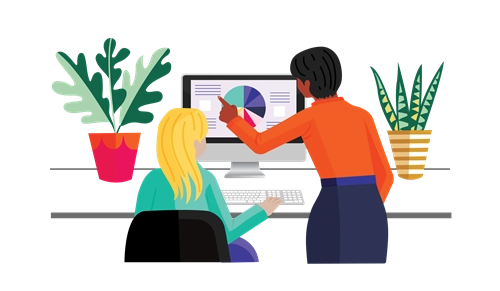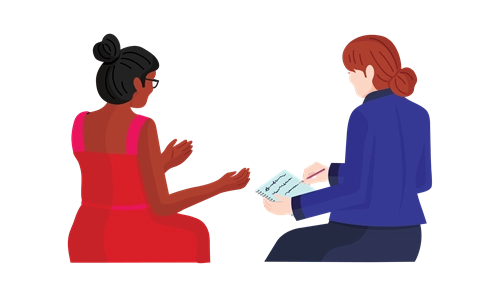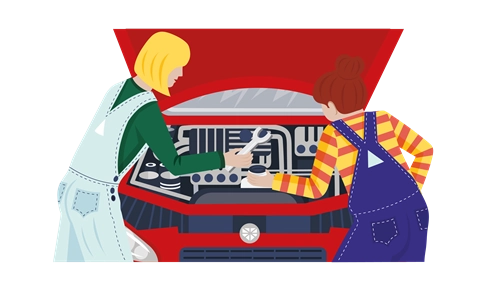-
Curriculum alignment
Years 9 and 10 Science
Year 9 Science Understanding
Chemical reactions, including combustion and the reactions of acids, are important in both non-living and living systems and involve energy transfer (ACSSU179 – Scootle)
Year 10 Science Understanding
Different types of chemical reactions are used to produce a range of products and can occur at different rates (ACSSU187 – Scootle)
Years 9 and 10 Science as a Human Endeavour
Advances in scientific understanding often rely on technological advances and are often linked to scientific discoveries (ACSHE192 – Scootle)
Values and needs of contemporary society can influence the focus of scientific research (ACSHE230 – Scootle)
Years 9 and 10 Science Inquiry Skills
Formulate questions or hypotheses that can be investigated scientifically (ACSIS198 – Scootle)
Plan, select and use appropriate investigation types, including field work and laboratory experimentation, to collect reliable data; assess risk and address ethical issues associated with these methods (ACSIS199 – Scootle)
Select and use appropriate equipment, including digital technologies, to collect and record data systematically and accurately (ACSIS200 – Scootle)
Analyse patterns and trends in data, including describing relationships between variables and identifying inconsistencies (ACSIS203 – Scootle)
Use knowledge of scientific concepts to draw conclusions that are consistent with evidence (ACSIS204 – Scootle)
Evaluate conclusions, including identifying sources of uncertainty and possible alternative explanations, and describe specific ways to improve the quality of the data (ACSIS205 – Scootle)
Critically analyse the validity of information in primary and secondary sources, and evaluate the approaches used to solve problems (ACSIS206 – Scootle)
Communicate scientific ideas and information for a particular purpose, including constructing evidence-based arguments and using appropriate scientific language, conventions and representations (ACSIS208 – Scootle)
Years 9 and 10 Design and Technologies
Knowledge and Understanding
Critically analyse factors, including social, ethical and sustainability considerations, that impact on designed solutions for global preferred futures and the complex design and production processes involved (ACTDEK040 – Scootle)
Explain how products, services and environments evolve with consideration of preferred futures and the impact of emerging technologies on design decisions (ACTDEK041 – Scootle)
Processes and Production Skills
Critique needs or opportunities to develop design briefs and investigate and select an increasingly sophisticated range of materials, systems, components, tools and equipment to develop design ideas (ACTDEP048 – Scootle)
Develop, modify and communicate design ideas by applying design thinking, creativity, innovation and enterprise skills of increasing sophistication (ACTDEP049 – Scootle)
Work flexibly to effectively and safely test, select, justify and use appropriate technologies and processes to make designed solutions (ACTDEP050 – Scootle)
Evaluate design ideas, processes and solutions against comprehensive criteria for success recognising the need for sustainability (ACTDEP051 – Scootle)
Develop project plans using digital technologies to plan and manage projects individually and collaboratively taking into consideration time, cost, risk and production processes (ACTDEP052 – Scootle)
- S
- T
- E
- M
Green packaging
Years 9 and 10
Learning intentions
Students will:
- understand the physical and chemical changes food can undergo, and how packaging protects food
- evaluate the environmental impact of packaging materials relative to their function and cost
- design and test a packaging prototype for the circular economy.
Learning hook
- Watch Sir David Attenborough’s plastic messageand read an article from ABC Science about the rate of plastic pollution.
- Explain to students that a third of household waste is typically food packaging. In Rethinking plastic packaging, Unilever report that only 14 per cent of plastic packaging used globally is recycled, while 40 per cent ends up in landfill, and 30 per cent ends up in fragile ecosystems.
- Most of the world's population lives in cities, where there are few options for independently growing food. Consequently, 3.5 billion people in cities buy their products away from home – and these products usually come packaged.
Explain that as a class, we’re going to investigate more sustainable packaging solutions.
Girls in focus
Research has shown that girls are interested in careers in which they can ‘do good’. This topic shines a spotlight on a significant global problem and shows how a range of STEM practitioners are seeking solutions.
Learning input
Introduce students to the functions of food packaging:
- to keep the food clean
- to protect the food from unwanted physical and chemical changes (such as oxidation and destruction from insects) and to facilitate desired physical changes (such as heating and cooling)
- to identify the product and provide sales appeal
- to be inexpensive and economical, both in material and transportation.
Learning construction
- Students explore why there are different designs for packaging. For example, the teacher can model comparing a plastic drink bottle to a bag of flour.
In small groups, students compare packaging for different products.
For each package, they should:
- explain how the package design works
- identify the chemical and physical changes the packaging form and material might prevent or facilitate.
Students can also use online catalogues to investigate whether there are other packaging options for that product.
-
At home, students examine their recycling and other waste and suggest products that would most benefit from redesigned packaging. The class collates these findings to develop a short list of products to use as the basis for the engineering challenge.
Girls in focus
The opportunity to physically manipulate and investigate different types of packaging in a collaborative environment encourages girls to engage with the topic.
Learning input
-
Introduce students to the concept of the circular economy: that we should keep resources in use for as long as possible, as opposed to a traditional economy of make, use, dispose. Watch the clip Re-thinking progress: The circular economy from the Ellen Macarthur Foundation.
- Explore local achievements: Scientia Professor Veena Sahajwalla, a materials scientist, engineer and innovator from UNSW has developed the world’s first micro-factory. To find out more, watch the clip Micro-factories.
- Now have students read an article from National Geographic and complete a jigsaw activity: students research one of the innovative packaging solutions in the article then share their findings with a small group of students. (Note that the links are embedded in the article.)
Girls in focus
Many girls don’t see STEM careers as creative or collaborative. The National Geographic article mentions Tomorrow Machine, a Swedish design studio specialising in package, product and food concepts. Tomorrow Machine is led by two women, Hanna Billqvist and Anna Glansén, and their website provides examples of beautiful, creative food packaging designs.
Tomorrow MachineLearning construction
Packaging engineering challenge
Using the list of products requiring a new packaging approach they compiled earlier, students work in groups to select a product and design a new approach to its packaging that will reduce environmental impact.
Students need to consider:
- material (environmental impact vs food protection)
- form (ease of shipping and storage vs customer appeal).
Material
As part of understanding food protection requirements, students should research potential environmentally friendly materials, then design an experiment to test different materials with their product. They can review an experiment from Science Buddies and modify it to test their product.
Form
Students build a prototype of their design, showing how it is constructed, and how it can be disposed of.
Part D
Students pitch their design to a panel of community members, including supporting evidence for their material choice and form design.
Girls in focus
Girls may need additional support in the prototype-building phase of the project, as some may not have had extensive experience in manipulating materials. Ensure that girls are not relegated to non-technical roles in the group. Consider collaborating with a Design and Technologies teacher and providing an extra session for students to learn how to use workshop tools and manipulate materials. Promote a growth mindset by offering specific praising for effort, strategies and behaviours.
-
Rubric
Assessment
Packaging engineering challenge
Criteria
Beginning
Achieved
Exceeded
Needs analysis
Describes needs relating to materials and form. Describes needs of a range of stakeholders and relates these to materials and form. Describes key stakeholder needs and relates these to material and form within a circular economy model. Materials investigation design
Plans an investigation to test at least three materials against a single condition. Plans an investigation to test at least three materials against several conditions, including a risk assessment. Plans an investigation to test at least three materials against several conditions, including measures to ensure reliability of data and a risk assessment. Materials investigation conduct
Selects and uses equipment safely. Selects and uses appropriate equipment safely. Selects and uses appropriate equipment safely, systematically and accurately. Materials investigation analysis and findings
Identifies trends in data and draws conclusions. Uses knowledge of scientific concepts to draw conclusions about observed trends that are consistent with evidence. Uses knowledge of scientific concepts to draw conclusions about observed trends that are consistent with evidence and identifies possible areas for error in the method used. Prototype design
The prototype shows how a ‘greener’ material could be used to package a product. The prototype shows how a ‘greener’ material could be used to package, transport and market a product. The prototype shows how a ‘greener’ material can be used to improve packaging, transport and marketing of a product. Prototype pitch
The pitch explains how environmental considerations have informed the packaging design. The pitch explains how social, economic and environmental considerations have informed the packaging design. The pitch explains how emerging technologies can influence social, economic and environmental considerations to inform packaging design.
